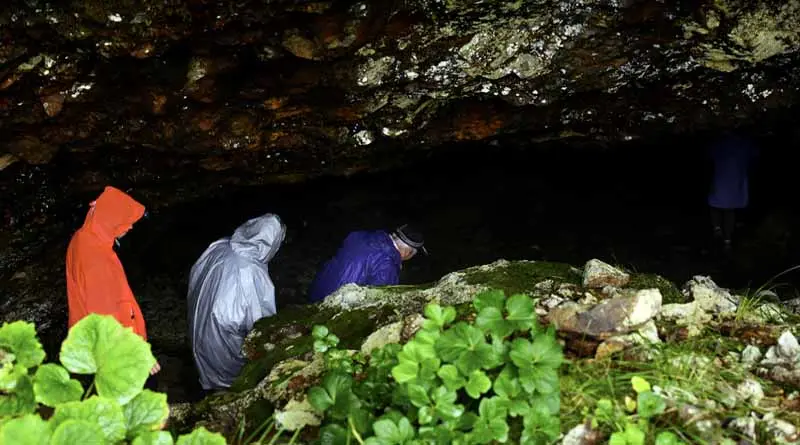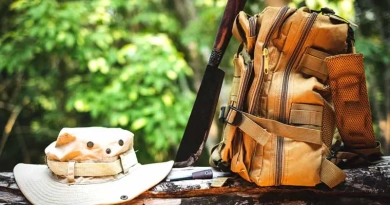
How do I protect myself from the elements in extreme weather
Shelter Against the Storm: Protecting Yourself from Extreme Weather
There I was, alone in the wild expanses, where the skies could darken with storms or the sun could scorch the earth within the span of a few hours. Each gust of wind and crack of thunder posed a question as old as time, yet urgent in its immediacy: “How do I protect myself from the elements in extreme weather?” Understanding this was not just about comfort—it was about survival.
Understanding the Fury of Nature
The first step in battling the elements is recognizing the diversity and ferocity of extreme weather—be it a blizzard, torrential rain, a scorching heatwave, or high winds. Each type of weather presents unique challenges and dangers. The obstacles are manifold: maintaining core body temperature, ensuring adequate hydration, and finding or creating shelter. In these moments, nature is neither friend nor foe but a force to be reckoned with.
Assessing the Options and Overcoming Obstacles
Adapting to Extreme Weather: Survival Strategies Across Climates
When faced with extreme weather, the environment itself often guides your survival strategy. Whether you’re stranded in a snowy tundra or navigating the harsh conditions of an arid desert, the choices you make about how to use available resources are pivotal. Each environment demands a tailored approach to ensure safety and increase the odds of survival.
Understanding the Environment
The first critical step in preparing for extreme weather conditions is gaining an understanding of the environment and its typical weather patterns. This knowledge is key to anticipating challenges and preparing effectively. For instance, knowing that a desert can experience drastic temperature changes between day and night can guide you to prepare both insulating and breathable clothing. Similarly, understanding that a snowy tundra may offer few natural shelters but plenty of material for building snow shelters is vital. Such awareness informs your preparation strategy and helps build resilience against the elements.
Material Readiness: Gear and Clothing
Your gear and clothing are your primary defense against the elements. The right choices in equipment can indeed be life-saving. Here’s how to approach this:
- In Cold Climates: Opt for layered clothing to create insulation. The layering system typically consists of a base layer that wicks moisture away from the skin, a middle insulating layer that traps heat, and an outer layer that protects from wind and water. Materials like wool and synthetic fibers often work best for these purposes.
- In Hot Climates: Choose clothing that is light-colored, loose, and breathable to reflect sunlight and allow air circulation, which helps cool the body. Fabrics like cotton or specialized moisture-wicking materials are ideal.
The unique challenges of the environment should also play a role in the choice of gear, such as heavier, waterproof boots for wet conditions or lightweight, breathable footwear for dry heat.
Essential Shelter Strategies for Extreme Weather Survival
In the wilderness, the importance of finding or creating adequate shelter cannot be overstated, especially under extreme weather conditions. The type of shelter that’s most appropriate can vary widely, depending on the environment and the materials at your disposal. Here’s a deeper exploration of the types of shelters that can be utilized to protect against the harsh elements:
Utilizing Natural Shelters
Natural shelters are often the quickest way to protect yourself from harsh conditions, as they utilize the existing landscape features to provide protection:
- Caves: These natural formations provide excellent protection from wind, rain, and snow, and can even offer a stable temperature environment. However, it’s crucial to ensure the cave is stable and not inhabited by animals.
- Rock Overhangs: These structures can offer good shelter from rain and sun. Care must be taken to ensure the area above and around is secure and not prone to falling rocks.
- Dense Forests: Areas with thick underbrush or fallen trees can provide natural windbreaks and some protection from precipitation. Constructing additional cover using branches and foliage can enhance their effectiveness.
These natural shelters require minimal alteration to be effective, which conserves energy—a crucial factor in survival scenarios.
Constructing Shelters
When natural shelters are not available, constructing a shelter becomes necessary. The type of shelter you build will depend heavily on the available materials and the specific environmental challenges:
- Snow Caves and Igloos: In snowy and icy conditions, these shelters can be lifesaving. Snow acts as an excellent insulator and can keep the interior of a snow cave or igloo much warmer than the outside air. The construction of these shelters, while energy-intensive, can protect from the biting wind and freezing temperatures.
- Lean-tos and Debris Huts: In forested areas, a lean-to can be constructed using branches leaned against a fallen tree or a sturdy branch supported by two trees. Covering the framework with leaves, boughs, and other debris creates a layer that can shield from wind and rain. Debris huts, made by creating a skeleton of branches and covered with forest debris, can be remarkably warm and dry.
- Insulating from the Ground: Regardless of the type of shelter, it’s critical to insulate it from the ground, as the earth can draw heat away from the body. Materials like leaves, pine needles, or even gear like backpacks and extra clothing can be used to create a barrier between you and the ground.
Positioning Your Shelter
The placement of your shelter can significantly impact its effectiveness. Here are key considerations:
- Avoid Low-Lying Areas: These can become cold and damp, especially at night. They are also prone to collecting water during rain, making them undesirable locations for shelter.
- Prevailing Winds: Position the entrance of your shelter away from prevailing winds to reduce exposure to cold drafts and driving rain or snow.
- Accessibility to Resources: Consider proximity to water, firewood, and potential food sources when choosing a shelter location, but also keep safety in mind to avoid flood-prone areas or unstable terrain.
Whether utilizing natural formations or constructing shelters from scratch, the primary goal is to create a safe, insulated space that conserves body heat and protects from the elements. Mastery of these skills combines an understanding of the environment with the practical application of survival techniques. Each shelter type and strategy offers a unique set of benefits tailored to specific weather conditions and landscapes, ensuring that, with the right knowledge, one can remain resilient in the face of nature’s extremes.
Mastering Survival Techniques: Essential Strategies for Outdoors
When venturing into the wilderness, whether for leisure or in a survival scenario, understanding and implementing core survival strategies are crucial. These include effective layering for insulation, maintaining hydration, protecting against the sun, constructing shelters, and preparing an emergency kit. Each element plays a vital role in ensuring safety and resilience in changing outdoor conditions.
Layering for Insulation
Proper layering is fundamental to regulating body temperature and preventing hypothermia or overheating, which can occur unexpectedly in many environments:
- Base Layer: This is your moisture-wicking layer, sitting closest to your skin. Its primary function is to keep your skin dry by drawing sweat away to the fabric’s exterior where it can evaporate. Materials like merino wool or synthetic fibers are excellent for this layer.
- Middle Layer: Serving as the insulating layer, it retains body heat to protect you from the cold. Fleece or down jackets are popular options, providing warmth while still being breathable enough to manage body moisture.
- Outer Layer: This is your protective shell against wind, rain, and snow. It should be waterproof and windproof to shield you from the elements. Goretex or similar materials are ideal for this layer.
Adjusting these layers based on your activity level and weather changes is crucial. For instance, you might remove the middle layer during strenuous hikes to prevent sweating and put it back on during breaks or when the temperature drops.
Hydration and Sun Protection
In any outdoor setting, particularly in hot and sunny environments, maintaining hydration and protecting against sun exposure are critical:
- Hydration: Carry enough water for your journey and a bit extra for emergencies. Dehydration can lead to serious heat-related illnesses. Consider using hydration packs for easy access to water and monitoring intake.
- Sun Protection: Prolonged exposure to UV rays can cause sunburn and lead to heatstroke. Use broad-spectrum sunscreen with a high SPF, wear a wide-brimmed hat, sunglasses, and long-sleeved, UV-protective clothing. Reapply sunscreen regularly, especially if sweating or swimming.
Creating Effective Shelter
Building a shelter that effectively leverages the natural landscape can greatly enhance your safety and comfort:
- Location: Choose a site protected from natural hazards like wind and water. Utilize natural windbreaks and elevated ground to avoid water accumulation.
- Materials: Use locally available materials—branches, leaves, grass, and snow—all can be used depending on the environment. The design should cater to the specific climate; for example, a lean-to for wind protection or a snow cave for insulation.
- Stability and Insulation: Ensure your shelter is stable and reinforced to withstand weather conditions. Use foliage, boughs, or even your gear to insulate from the cold ground.
Emergency Preparedness Kit
A well-prepared emergency kit can be a lifesaver in outdoor scenarios:
- Water and Food: Pack extra water and high-energy, non-perishable food items.
- Thermal Blankets: Compact and designed to retain heat, these can prevent hypothermia.
- Fire Source: Waterproof matches, lighters, and fire starters are essential for warmth, cooking, and signaling for help.
- Navigation Tools: Include a map, compass, or GPS device.
- First Aid Kit: Stock with bandages, antiseptics, pain relievers, and specific medications if required.
Equipped with the knowledge of these fundamental survival techniques, adventurers can face a wide array of outdoor environments with confidence. From the icy winds of mountain peaks to the scorching sun of desert plains, the ability to adapt with proper clothing, hydration, shelter, and a comprehensive emergency kit is essential for safety and success in the wilderness.
Surviving extreme weather demands more than just courage and willpower—it requires preparation, appropriate gear, and a deep understanding of the environment. By mastering these strategies, you equip yourself not just to survive, but to thrive, regardless of the challenges that nature may present. In the wilderness, every gust of wind and ray of sun teaches us something about survival, resilience, and the indomitable human spirit.
Tools and Resources Needed
- Thermal and waterproof clothing
- Portable shelter materials (tarp, rope)
- Insulated sleeping pad
- Sunscreen and water containers
- Emergency kit, including first aid supplies and signaling devices
As the storm passed and the stars began to peek through the breaking clouds, the silence that followed was a profound reminder of nature’s dual capacity for beauty and brutality. Protecting oneself from extreme weather isn’t just about the physical preparations, though they are essential. It’s about respecting the power of the elements and understanding that in the wilderness, being prepared is not just a strategy—it is a way of life. Each gust of wind and drop of rain holds a lesson in the art of survival, teaching us about our limits, our capabilities, and ultimately, our resilience.






